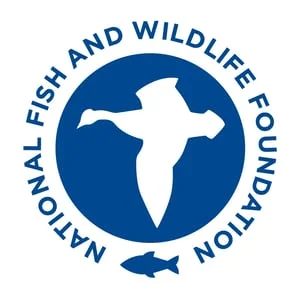WASHINGTON, D.C. (December 19, 2017) –The National Fish and Wildlife Foundation (NFWF) today announced $700,000 in grants to conserve and restore habitats for at-risk aquatic species within targeted freshwater ecosystems of the Southeast. The grants will generate $1.71 million in match for a total conservation impact of $2.41 million.
The grants were awarded through the Southeast Aquatics Program, a partnership between NFWF, the U.S. Forest Service and the U.S. Fish and Wildlife Service. The program this year is targeting two regions – the coastal watersheds of the Carolinas and the Apalachicola-Chattahoochee-Flint River Basin in Georgia and Florida. These watersheds were prioritized based on input from state wildlife action plans and the recently completed TN Aquarium and University of Georgia River Basin Center assessmen, which was funded by NFWF.
“The rivers and streams of the Southeast support the greatest diversity of freshwater species in the United States,” said Jeff Trandahl, executive director and CEO of NFWF. “This new program will help to safeguard these rare and at-risk species by improving the habitats they depend on.”
The five grants announced today will restore and enhance riparian and in-stream habitat, increase water flows and help landowners apply expert advice to more efficiently manage crop irrigation systems, saving water over traditional methods. In this inaugural round of funding, the projects are expected to:
- estore 2 miles of stream habitat
- Conserve over 830 cubic feet per second annually; that’s enough water to fill one Olympic sized swimming pool every 30 hours over the course of one year
- Prioritize more than 200 culverts and barriers for removal
- Develop protocols to detect mussels and their host fish using eDNA monitoring
“Forestland retention almost always complements watershed conservation, and these grants will empower private landowners to do their part to promote healthy habitats for these at-risk species,” said John Crockett, acting deputy regional forester for state and private forestry at the U.S. Forest Service. “Aquatic habitats are incredibly sensitive to environmental disturbances, but healthy forests can provide vital ecosystem service benefits and are critical in protecting water quality.”
This is the first year of the Southeast Aquatics Program. The program is designed around a habitat-based approach, benefiting a diversity of species and reducing the likelihood of future listings under the Endangered Species Act for at-risk species. This funding opportunity is expected to expand in its second year with the U.S. Department of Agriculture’s Natural Resources Conservation Service slated to join the funding partnership.
“These projects will contribute significantly to conservation of priority fish, mussels and other aquatic wildlife in the Apalachicola-Chattahoochee-Flint River Basin and in coastal watersheds across North and South Carolina,” said Mike Oetker, acting regional director for the U.S. Fish and Wildlife Service’s Southeast Region. “Anyone who has ever floated these rivers or been shin deep in them with a fishing rod knows how incredible these places are and the conservation work being announced today with strong partnerships will only make them better.”
To learn more about the Southeast Aquatics Program or to download the 2017 Southeast Aquatics Program grant slate, visit www.nfwf.org/seaquatics.
About the National Fish and Wildlife Foundation
Chartered by Congress in 1984, the National Fish and Wildlife Foundation (NFWF) protects and restores the nation's fish, wildlife, plants and habitats. Working with federal, corporate and individual partners, NFWF has funded more than 4,500 organizations and committed more than $3.8 billion to conservation projects. Learn more at www.nfwf.org.

